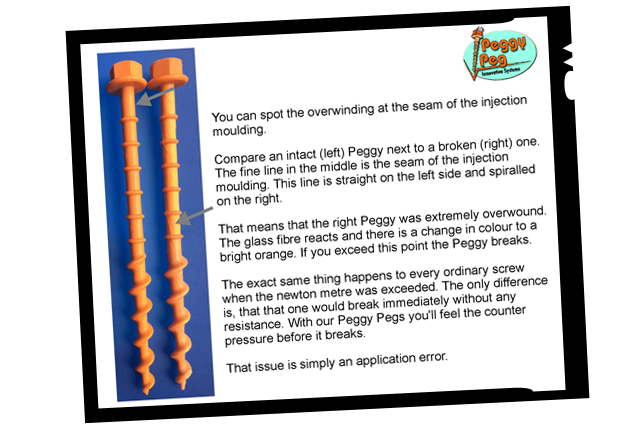which screw-in Peggy Peg for which ground... It's not about depth, it's about grip!
You can also find this icons on our packaging
-
extreme
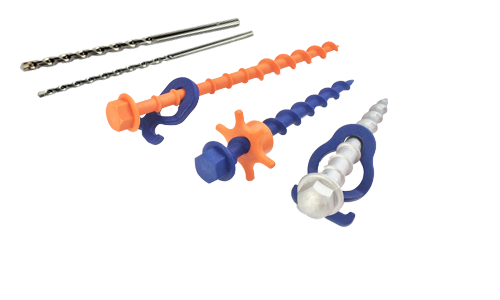 In “extreme hard” cases. Mostly mineral concrete, high concentrated and stony grounds. Peggy Peg also offers solutions here. Mandatory condition, however, is pre-drilling. If you don’t have an electrical drill there is another special solution you can use from our product range. Our HardCore Peggy with height-adjustable hook system. This Peggy Peg is hammered in until it grips and easily screwed out again. Its varying thread compared to the normal Peggy Peg Line allows you to secure your camping equipment even here.
In “extreme hard” cases. Mostly mineral concrete, high concentrated and stony grounds. Peggy Peg also offers solutions here. Mandatory condition, however, is pre-drilling. If you don’t have an electrical drill there is another special solution you can use from our product range. Our HardCore Peggy with height-adjustable hook system. This Peggy Peg is hammered in until it grips and easily screwed out again. Its varying thread compared to the normal Peggy Peg Line allows you to secure your camping equipment even here. -
stones
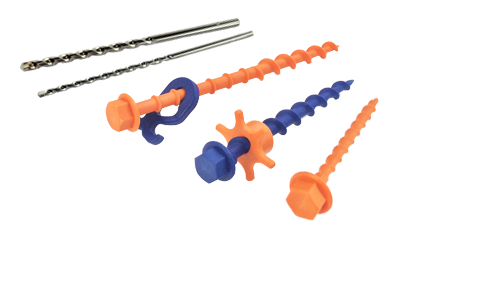 Big and little stones, mostly mixed with heavy clay or sandy soils. Most of the times those grounds thicken quickly and the Peggy Peg stops turning further down. In this case, please stop screwing and work with the height-adjustable hooks or the lock nut! Peggy N, S and Peg&Stop will work here perfectly. If the surface is still too hard you can simply pre-drill a hole. The Peggy Peg will find hold and remember to always place the anchoring hook close to the ground because of the leverage effect.
Big and little stones, mostly mixed with heavy clay or sandy soils. Most of the times those grounds thicken quickly and the Peggy Peg stops turning further down. In this case, please stop screwing and work with the height-adjustable hooks or the lock nut! Peggy N, S and Peg&Stop will work here perfectly. If the surface is still too hard you can simply pre-drill a hole. The Peggy Peg will find hold and remember to always place the anchoring hook close to the ground because of the leverage effect. -
hard
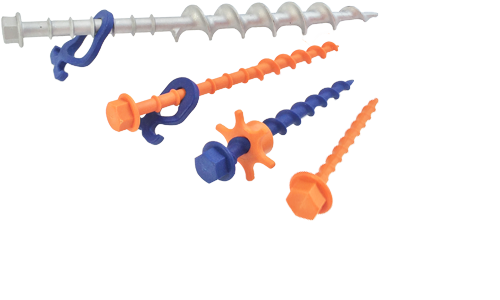 Field, forest and grassland. The ground here is full of roots and stones. You can screw-in directly. Most of the times those grounds thicken quickly and the Peggy Peg stops turning further down. In this case also, please stop screwing and work with the height-adjustable hooks or the lock nut! Peggy N, S and Peg&Stop will work here perfectly. The big LA works conditionally, depending on the moister content of the soil. The Peggy’s will find its way and sometimes it works different than first expected.
Field, forest and grassland. The ground here is full of roots and stones. You can screw-in directly. Most of the times those grounds thicken quickly and the Peggy Peg stops turning further down. In this case also, please stop screwing and work with the height-adjustable hooks or the lock nut! Peggy N, S and Peg&Stop will work here perfectly. The big LA works conditionally, depending on the moister content of the soil. The Peggy’s will find its way and sometimes it works different than first expected. -
normal
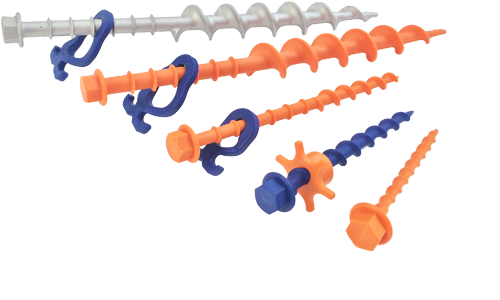 This symbol emblematizes the most common grounds, which you’ll find on camping grounds. It’s an invested, parcelled and ordered composition. Depending on the weather the soils are wet and/or dry. In most of the cases you won’t have any problems with the Peg&Stop or the arranged Peggys N, S to the StartKit. Due to the moister content in the ground they’ll be mostly screwed in completely. For storm anchoring purposes the Peggys L and LA are useable. Because of their bigger thread and higher compacting, they probably won’t be screwed all the way in. That’s when our height-adjustable hook system goes into action again.
This symbol emblematizes the most common grounds, which you’ll find on camping grounds. It’s an invested, parcelled and ordered composition. Depending on the weather the soils are wet and/or dry. In most of the cases you won’t have any problems with the Peg&Stop or the arranged Peggys N, S to the StartKit. Due to the moister content in the ground they’ll be mostly screwed in completely. For storm anchoring purposes the Peggys L and LA are useable. Because of their bigger thread and higher compacting, they probably won’t be screwed all the way in. That’s when our height-adjustable hook system goes into action again. -
soft
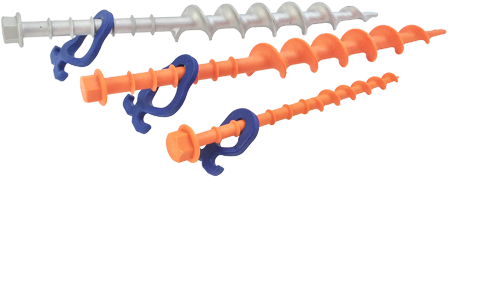 Soft is the generic term for all softer soil types. You can easily use a trick do define how soft the ground is. If you move a vehicle without seeing any tracks, you’ll be fine using the Peggy N. In cases where the car tracks are visible, we recommend you use one of the bigger Peggy Pegs L or LA. Those screw deeper into the ground and it compacts more easily with the bigger tread. The soft or sandy ground in general needs to be a little bit solid. Keep in mind that shifting sands won’t provide any grip for the Peggy Peg.
Soft is the generic term for all softer soil types. You can easily use a trick do define how soft the ground is. If you move a vehicle without seeing any tracks, you’ll be fine using the Peggy N. In cases where the car tracks are visible, we recommend you use one of the bigger Peggy Pegs L or LA. Those screw deeper into the ground and it compacts more easily with the bigger tread. The soft or sandy ground in general needs to be a little bit solid. Keep in mind that shifting sands won’t provide any grip for the Peggy Peg.
General rule: the harder the ground, the smaller the screw-in peg can be, because it usually finds a quick grip.
Does it also work in winter?
Yes, it does! You just need to consider some things. In general, it’s the same application like in gravel/stony areas. It’s mandatory to pre-drill! If necessary, even with a percussion drill. The plastic material the Peggys are made from contains a little amount of water which freezes at minus temperatures. Because of this the Peggy gets brittle and is easier to break. We recommend you therefore to give them into hot water before screwing them into the frozen ground. This gives more elasticity and also helps before screwing the Peggy Pegs out again. It’s not unpreventable that one breaks of sometimes.
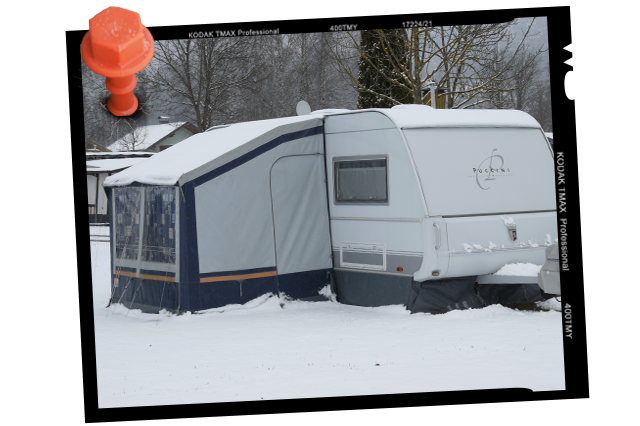
Can the screws snap off?
Well, of course they can snap off. Everything what’s beyond tight is broken. From all the "broken pieces" we examine, were 99% overwound. Probably because men wanted to screw the Peggy all the way into the soil 😉 Every screw (also ordinary ones) has a certain value of newton meters. If this got exceeded the screw breaks, physically logical. So, for our Peggy Pegs it is effective only to screw until the Peggy stops turning further into the ground. Check if the Peg is secure, work with the height-adjustable system and always place the double hook closest to the soil because of the leverage effect. You will achieve this by setting your electric drill to the required torque and starting it with short intervals. By doing this, you’ll notice the counter pressure of the Peggy Peg before reaching its breaking point. When carrying this out handle with care and everything should stay perfectly intact.
Are there also Peggys made from metal?
Yes and no. A few of our Pegs are made from Aluminium, which is a kind of metal. The other ones are made from plastic. Both materials have in common that they are extremely light. Every camper needs to think about their maximum load nowadays. Compared to the usual weight of a tent peg set (5-10kg), weighs our StartKit only 1,3kg and meets the same requirements (anchoring an up to 5,5m long tent). The electric drill, which is most of the times already with you for operating the crank supports, won’t add much of weight anymore.
Conclusion: pegs made from steel would be way too heavy and also wouldn’t be elastic to find the perfect way below the surface.
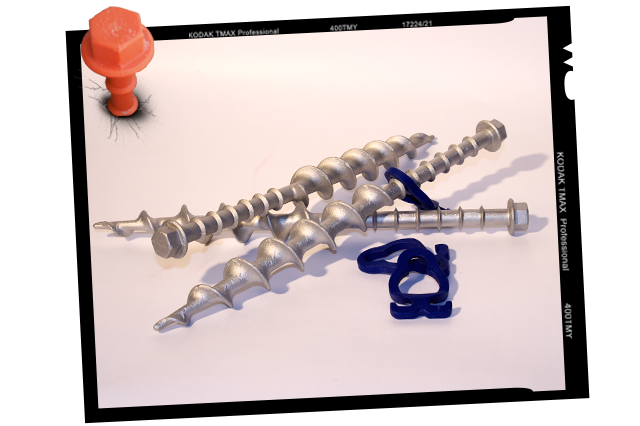
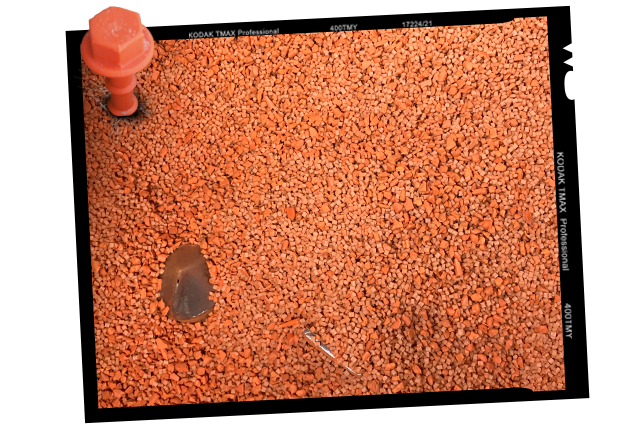
What's the material exactly?
Our Peggys are made from glass-fibre reinforced polyamide in the injection moulding process. This material is also known as “nylon”. It can be found in the cockpit of the motorhome, on the bicycle rack but also in your household and garden. Actually, you can find it everywhere in your daily life. It’s not a cheap plastic, which is usually used for plastic impact pegs. It’s a matter of the right processing, as well as the perfect mix of fibreglass and UV inhibitors to create a high-quality product. It is equally light, elastic, very heat-resistant and highly resilient, but not unbreakable (see above). The best possible choice of materials for this purpose.

